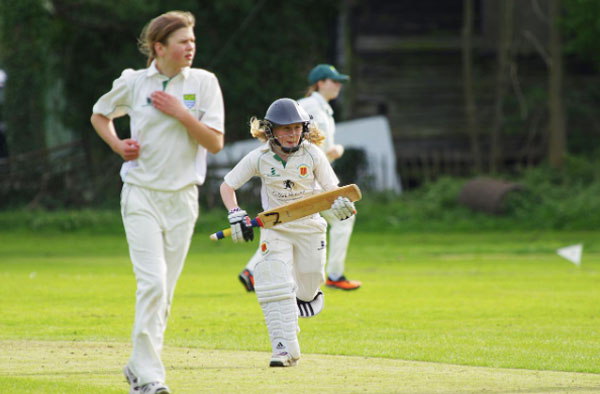How Developing Nations Are Nurturing Female Cricket Talent
Females have witnessed increasing development and inclusion in sports, cricket in particular. The inclusion yields a positive impact, given that the standard of female cricket games is improving at every milestone. Female cricket development hasn’t come without challenges and barriers, such as sponsorship, facilities, infrastructure, etc.

To keep the development of female cricket at a consistent uptrend, there’s a need to overcome these challenges and keep nurturing young female cricket talents, especially in developing nations. As such, this article carries out an in-depth analysis and insight into how the development of female cricket talent is being carried out in some developing nations despite the unique challenges faced.
Identifying Talent: Scouting and Development Programs
One of the key strategies of scouting and identifying talents to nurture in developing nations begins with looking at the grassroots and several school levels to find girls with undying enthusiasm toward cricket.
Using Cricket South Africa (CSA) as a case study, they have been at the forefront of nurturing future female cricket talents in South Africa through talent development from U13, U16, and U19 talents. The scouting system of CSA also spans provincial and national competitive levels.
As a result, a significant number of female cricketers have been able to transition into full-time cricket players on the highest competitive levels. Also, the female cricket category in South Africa is taking giant strides toward becoming a fully professional affair.
In Asia, former Indian female cricketer and coach Sunetra Arun Paranjpe has had to train in grassroots programs in Mumbai, where the system ran on a mixed facility that made girls compete with boys. Currently, Sunetra helps identify and nurture young female talents across U19 and U23 by acting as a trainer and motivator for upcoming talents in India.
Overcoming Barriers: Challenges and Triumphs
Nurturing young female cricket talents in developing countries has encountered various challenges. These barriers include:
Unfavorable Stereotypes
Female cricket and sports, in general, are often not given as much attention as their male equivalent, as it is believed that female cricket may not generate the same buzz and commercial success that male cricket has been enjoying in years past.
Often, grassroots female cricket is seen more as a recreational activity that wouldn’t scale to a professional level, given the developing nature of professional female cricket. These stereotypes have impacted how scouting female talents is being approached and the facilities built.
The tide is gradually turning as more opportunities and facilities are being built for female cricket talents to thrive. Veteran female cricketers like Sunetra Arun Paranjpe in India have embarked on a hands-on approach to nurturing and inspiring young girls to chase their dreams in cricket.
Lack of Proper Sponsorship and Opportunities
For the most part, female grassroots cricket has yet to witness consistent sponsorship and motivation in developing countries. It has stunted the development of young talents from reaching their full potential.
Recently, more attention has been given to nurturing young talents. For instance, Anjum Chopra, a former Indian female cricket captain in 2023, set up the Anjum Chopra Scholarship in partnership with PUSH Sports. To train promising young female talents and give them the opportunity to scale into the big leagues.
The Anjum Chopra Scholarship aims to give scholarships to at least 10 girls from across India to hone their cricket skills. It is a small percentage of the over 150 applicants, but it is a step in the right direction, and expansion may be imminent. Other foundations may as well take a cue from the scholarship scheme to create more platforms for female cricket talents to scale.
Not Enough Awareness of Females Cricket
The limelight focuses more on the more established male cricket teams and tournaments. This lack of exposure starves female cricket of prime viewing time, a key ingredient toward creating a fan base and dedicated followership.
With increased viewership comes the potential for more sponsorships and investment. It can fuel initiatives promoting the sport and make it even more exciting to watch because fans can earn with a zillion ways to bet on skilled female cricketers for those who enjoy online betting on their favorite players. Bookmakers will also sponsor teams to promote awareness. The triumph is that the International Cricket Council (ICC) has taken charge of the International Women’s Cricket Association to bring more inclusivity to the female cricket industry.
ICC has allocated a significant percentage of sponsorship revenue to women’s cricket that’ll trickle down to the grassroots level. Cricket facilities are now mostly shared between male and female athletes. Also, women’s cricket games are getting improved broadcast time, given that broadcast rights from ICC are now unisex. As such, TV channels that acquire the right to televise ICC tournaments will be televising both the male and the female tournaments. It has been a step in the right direction for female cricket games, with more inroads expected soon.
Investing in the Future: Education and Infrastructure
There’s real hype about the future of women’s cricket, and the hype is for a good reason. We’re seeing a lot of positive changes happening thanks to some amazing people, for instance, Anjum Chopra. Former players are speaking out, cricket organizations are stepping up, and enthusiastic fans at every level, from local clubs to the pros, are cheering them on.
However, more work needs to be done, as adequate facilities for proper talent recruitment are in short supply in many developing nations. There’s a need to invest in stadiums, training facilities, and educational structures where young talents can be nurtured into becoming the model professionals in cricket.
Setting up more educational programs and infrastructure for female cricket will increase the number of young talents that’ll be integrated into the games. It will help elevate the standard of female cricket and, in turn, see an improvement in the female fan base, sponsorship, revenue generation, and the competitiveness of female cricket.
Success Stories: From Local Fields to International Arenas
One of the success stories of female cricket that easily comes to mind is the Thai women’s national cricket team and their remarkable qualification for the 2020 ICC Women’s T20 World Cup. They went from knowing very little about cricket to qualifying for the World Cup after over a decade of consistent dedication and tenacity toward the game.
Individually, the story of India’s Saika Ishaque, who went from playing in the slums of Mumbai to becoming one of India’s breakthrough female cricketers today, is an inspirational story that young talents in developing countries should look up to while working hard to break into mainstream professional cricket.
The Role of Policy and Support Structures
To improve the relevance of female cricket and the development of grassroots cricket programs, there is a need to review existing cricket policies and implement proper support structures. These support structures can include involving more women in cricket policy-making, which will help bring diverse perspectives and positive change in the governance structure of cricket.
Also, there’s a need for more equity and inclusivity in the percentage of funding for female grassroots cricket programs. With the few female cricket facilities, a support structure with annual funding for the development of grassroots cricket programs will increase the quality of female cricketers and tournaments in the long run.
Conclusion
There are a lot of factors affecting the development of female cricket in developing nations. The female cricket industry has recorded significant success stories in both team, individual, and structural development from across the globe. There has been an improvement in infrastructure and awareness of female grassroots programs.
While that is a step in the right direction, there’s still a long way to go in reaching the standard that female cricket must be. That is why there’s the need for more female sponsorship, correction of female stereotypes, greater awareness of female grassroots programs, building more female cricket facilities, and implementing policies to help female cricket reach the required standard.

Loves all things female cricket